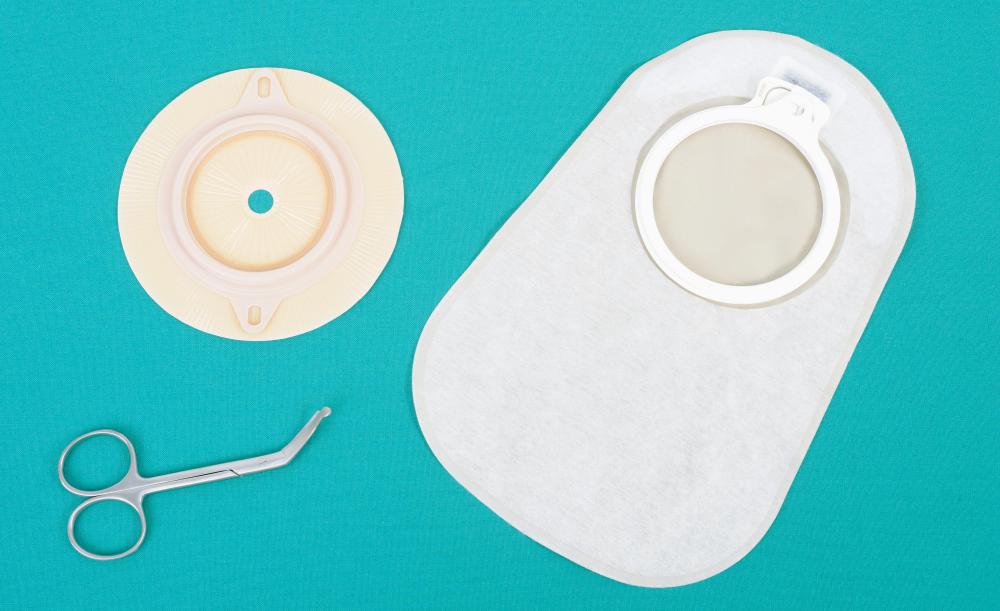At TheHealthBoard, we're committed to delivering accurate, trustworthy information. Our expert-authored content is rigorously fact-checked and sourced from credible authorities. Discover how we uphold the highest standards in providing you with reliable knowledge.
What Are the Different Types of Ostomy Appliances?
There are many types of ostomy appliances. Which ones are needed depends on the type of ostomy and the requirements of a specific patient. In most cases the main backbone of ostomy appliances will include a wafer and a bag, either as one piece or two separate pieces. After undergoing an ostomy, the ostomy nurse will educate the patient on ostomy care and discuss the options, choosing the best one for that specific patient.
An ostomy is a diversion of waste products through a stoma, usually made from intestine, which exits through the abdominal wall. There are three main types of ostomy, each which requires slightly different ostomy appliances. By using the correct equipment and techniques and with good advice from an ostomy nurse, living with an ostomy need not be difficult.

A colostomy, usually situated on the left side of the naval, diverts formed feces from the large bowel. An ileostomy, usually made on the right side of the naval, produces liquid stool, diverted from the small intestine. A urostomy diverts urine through a stoma usually placed on the right side of the naval. The choice of ostomy appliances depends on which type of ostomy has been done.

In some cases, controlled output is possible, requiring no permanent wafer or bag. In these cases a stoma plug is often used and a stoma patch or cap may be placed over the stoma to catch any leakage of mucous. In most ostomy patients, a wafer, which sticks to the tummy and has a hole in the middle of it through which the stoma sticks, and a bag which attaches to the wafer, are used. A one-piece has the wafer and bag attached to each other. The bags may be disposable or reusable.

Depending on the type of ostomy, the bag may have a tap or a clip at the end of it, through which the urine or feces can be removed. In the case of a urostomy, a urine leg bag or bed bag can be attached to the end of the urostomy bag. The urine can drain into this, allowing for less frequent emptying.
Other ostomy appliances which may be used, depending on personal choice, include belts to secure the bag and covers to hide the usually transparent bags. Various ostomy products, such as deodorizers, skin protection swabs and pastes and powders to improve adherence of the wafer are also available from ostomy suppliers.
AS FEATURED ON:
AS FEATURED ON:













Discuss this Article
Post your comments